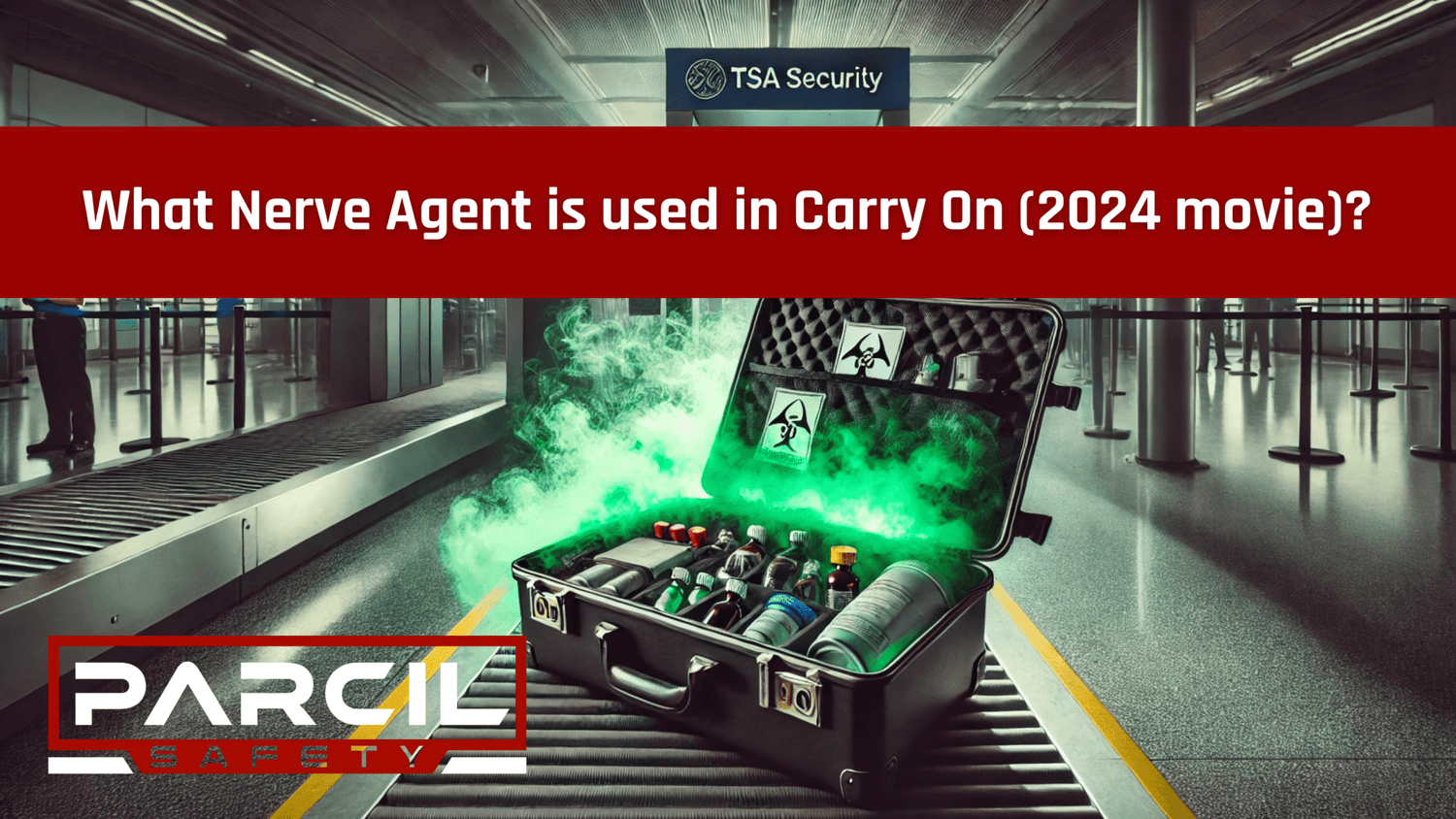Nerve Agents in Carry-On Movie (2024): A Reality Check on Chemical Weapons in Films
The 2024 Netflix thriller Carry-On has sparked widespread discussion about its portrayal of nerve agents, particularly Novichok, and the plausibility of chemical weapons being smuggled onto aircraft. This comprehensive guide explores the science behind nerve agents, their depiction in popular media, and the real-world implications of chemical weapons threats.
Understanding Novichok: The Deadly Nerve Agent in Carry-On
Carry-On centers around TSA officer Ethan Kopek, who faces a terrifying dilemma when forced to smuggle Novichok, a lethal nerve agent, through airport security during peak holiday travel. But what exactly is Novichok, and how dangerous is it in reality?
Novichok belongs to a class of highly toxic chemical weapons developed during the Soviet era. These advanced nerve agents are known for their:
- Extreme potency - requiring minimal amounts to cause severe harm or death
- Resistance to standard chemical weapon treatments and antidotes
- Complex molecular structure that makes detection particularly challenging
- Ability to persist in various environmental conditions
Read more at What Is Novichok? The Nerve Agent Weapon In Carry-On Explained.
Real Nerve Agents vs. Hollywood Portrayal: Facts and Fiction
Chemical weapons in popular media often walk a fine line between scientific accuracy and dramatic license. Notable examples include:
- The Rock (1996) - Featured VX nerve agent
- Mission: Impossible – Rogue Nation (2015) - Depicted various chemical weapons
- Carry-On (2024) - Showcases Novichok as a central plot device
What are Nerve Agents and How do They Actually Work?
Nerve agents are a class of organophosphorus compounds that disrupt the normal functioning of the nervous system. They inhibit acetylcholinesterase, an enzyme essential for breaking down acetylcholine, leading to an accumulation of this neurotransmitter and resulting in continuous nerve signal transmission. This causes muscles to contract uncontrollably, leading to paralysis and, ultimately, respiratory failure.
Common nerve agents include:
- Sarin (GB): A volatile liquid used in the 1995 Tokyo subway attack.
- VX: An oily substance known for its persistence and high toxicity, infamously featured in the film The Rock.
- Novichok Agents: A series of advanced nerve agents developed by the Soviet Union, notable for their potency and resistance to standard treatments.
Historically, these agents have been employed in warfare and targeted assassinations, with devastating effects on human health and the environment.
Historical Context: Real-World Nerve Agent Incidents
The 2018 Salisbury poisonings in England demonstrated the real threat of Novichok agents. This incident, which targeted Sergei and Yulia Skripal, led to:
- International diplomatic consequences
- Enhanced chemical weapon detection measures
- Increased public awareness of chemical threats
- Strengthened international security cooperation
So how accurate is this portrayed?
Public Safety and Preparedness
In the event of nerve agent exposure, immediate medical intervention is crucial. Standard treatments involve the administration of atropine, which blocks the effects of excess acetylcholine, and pralidoxime, which reactivates acetylcholinesterase. Emergency responders are trained to recognize symptoms of nerve agent poisoning and to implement decontamination procedures to prevent further harm.
Advancements in detection technologies have led to the development of portable devices capable of identifying trace amounts of nerve agents, enhancing the ability of security personnel to prevent and respond to potential threats.
To recap, in case of nerve agent exposure, immediate medical intervention is crucial:
- Atropine administration to counter acetylcholine buildup
- Pralidoxime treatment to reactivate affected enzymes
- Decontamination procedures to prevent secondary exposure
- Specialized training for emergency responders
Always be prepared: Carry a gas mask where feasible
Although many airlines since 2020 have stopped allowing gas masks, we still recommend having one in your "go bag" and being prepared for the worse. Our newest mask, the CS-100, was design exactly for scenarios like the above. Read more about it below, but again, a mantra we live by here at Parcil Safety is "Hope for the Best, Prepare for the Worse".
We also wrote an article recently on this movie featuring our more affordable survival gas mask option, the ST-100X survival gas mask. Just note you'll want to upgrade the canister if you're looking for protection against more aggressive agents such as nerve agents!
Could this Happen in Reality?
The scenario depicted in Carry-On, involving the smuggling of a nerve agent like Novichok onto a commercial flight, presents significant challenges in reality. Transporting such substances would require overcoming stringent security measures, as well as managing the inherent risks associated with handling highly toxic chemicals.
Modern airports employ multiple layers of security to prevent chemical weapons smuggling:
- Advanced detection systems capable of identifying trace amounts of dangerous substances
- Rigorous screening protocols for both passengers and cargo
- International cooperation through treaties like the Chemical Weapons Convention (CWC)
- Trained personnel equipped to handle chemical threats
Related Resources and Further Reading
- Chemical Weapons Convention Official Website
- CDC Information on Nerve Agents
- Airport Security Measures Against Chemical Threats
- History of Chemical Weapons in Warfare
Conclusion
While Carry-On provides thrilling entertainment, the reality of chemical weapons threats requires ongoing vigilance, international cooperation, and advanced security measures. Understanding the science behind nerve agents helps separate Hollywood drama from real-world concerns about these dangerous substances.
If you have any questions regarding nerve agents and what the best mask and canister combination is, email us at service@parcilsafety.com or give us a call at +1 (855) 715-1400.
Last updated: January 2024




















Leave a comment
All comments are moderated before being published.
This site is protected by hCaptcha and the hCaptcha Privacy Policy and Terms of Service apply.